
In a world where fashion is a universal language, Nigeria stands out as a vibrant hub of style and self-expression. With a population known for its diverse tastes and an insatiable appetite for fashion, starting a t-shirt business in Nigeria can be a rewarding and fulfilling endeavor.
But success doesn’t come without a clear roadmap and a strategic approach. That’s where we come in—to equip you with the knowledge, insights, and practical steps to navigate the exciting yet competitive terrain of the Nigerian t-shirt market.
Before diving into how to start a tshirt business in Nigeria, let’s look at some factors that directly influence the t-shirt business in Nigeria.
Table of Contents
Is a tshirt business profitable?
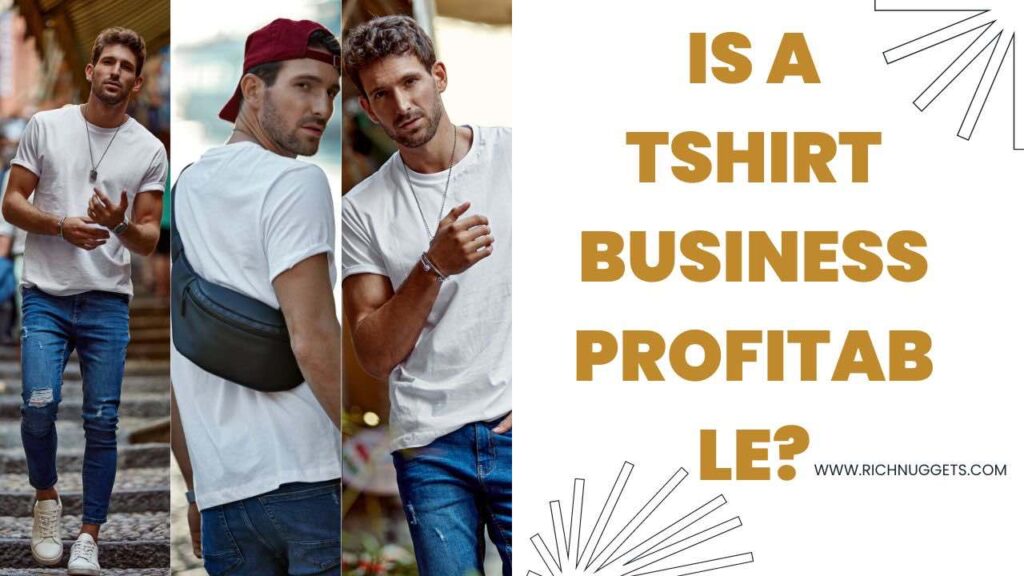
A t-shirt business is a profitable business, especially when leveraging on modern business models such as print-on-demand services and dropshipping. By selecting a specific t-shirt niche through market research, entrepreneurs can capitalize on this lucrative industry.
According to a study, the global custom t-shirt printing market was valued at $3.64 billion in 2020, and it is expected to maintain a compound annual growth rate of 9.7% from 2021 to 2028. This growth signifies a pool of potential for profitability in the t-shirt business.
When selling t-shirts, you can make a small profit on each unit sold, with a profit margin of about 40%-50%, allowing for a good profit when selling high volumes within a short time.
While a typical t-shirt seller can earn $90,000-$100,000 per year, it’s important to note that the as a starter or beginner your initial profits may not reach that level just yet. The success of your business will depend on various factors such as the niche you choose, the marketing strategies you implement, and how rapidly you can expand your customer base.
Understanding the Nigerian Fashion Market

To start a successful t-shirt business in Nigeria, it’s crucial to have a deep understanding of the Nigerian fashion market. The Nigerian fashion industry is renowned for its diversity, creativity, and vibrant fashion sense. By grasping the unique characteristics and dynamics of this market, you can position your t-shirt business for success. Here are key factors to consider when it comes to understanding the Nigerian fashion industry for your t-shirt business.
- Cultural Diversity: Nigeria is a multicultural country with diverse ethnic groups, each having its distinct fashion preferences and styles. Recognize and appreciate this diversity when designing your t-shirt collections to cater to a wide range of tastes.
- Fashion Trends: Stay abreast of the latest fashion trends in Nigeria. Monitor fashion magazines, social media influencers, celebrities, and local fashion events to gain insights into popular styles, colors, patterns, and design aesthetics that resonate with Nigerian consumers.
- Consumer Preferences: Understand the preferences and buying habits of Nigerian consumers. Consider factors such as affordability, quality, durability, comfort, and the cultural significance of certain designs or motifs. Nigerians value fashion that reflects their identity and cultural heritage.
- Local Brands and Competition: Familiarize yourself with local t-shirt brands that are already established in the Nigerian market. Analyze their offerings, pricing, marketing strategies, and target audience. Identify gaps or niches that you can fill with your unique value proposition.
- E-commerce Boom: Nigeria has experienced significant growth in e-commerce, fueled by increased internet penetration and smartphone usage. Embrace this trend by establishing a strong online presence for your t-shirt business. Invest in an engaging website, user-friendly interface, and secure payment options.
- Festivals and Events: Nigeria is renowned for its vibrant festivals and events, providing opportunities for t-shirt businesses to capitalize on. Tailor your designs to align with these occasions and leverage marketing campaigns around them.
- Sustainable Fashion: The global movement toward sustainable and ethical fashion is gaining traction in Nigeria. Consider incorporating sustainable practices into your business, such as using eco-friendly materials, supporting local artisans, and promoting ethical production processes.
With all these considerations carefully studied, understanding the Nigerian fashion industry won’t be a challenge when you decide to launch your T-shirt business.
How to Start a Tshirt Business

Defining Your Brand Identity and Target Audience
Defining your brand identity and target audience is a crucial step in starting a t-shirt business in Nigeria. It sets the foundation for your marketing strategies, product development, and overall business direction.
When it comes to creating a perfect brand identity for your business, you have to be specific about your;
- Mission and Values: Which explicitly answers; What is the mission behind your brand? and What your brands stand for?
- Brand Personality: Consider the personality traits that reflect your brand. Is it youthful and vibrant, sophisticated and elegant, or edgy and rebellious? Choose adjectives that align with your desired brand image.
- Unique Selling Proposition (USP): In other to have a high-sellable brand, your brand must have a uniqueness that easily differentiates it from your competitors. the uniqueness might be in your designs, quality, customization options, social impact, or innovative production methods.
- Visual Identity: Just like “OFF WHITE” which has a unique logo that differentiates its T-shirt from other brands, you too must have a unique logo for your brand. Apart from logo design other visual elements like; choosing color schemes, and typography can appeal to your target audience.
When you are done choosing the perfect brand for your T-shirt business the next thing to do is to identify your Target Audience. In identifying your target audience, you must pay attention to these four(4) factors; demographics, psychographics, the needs and pain points, and market research.
Demographics means, defining the demographics of your target audience, such as age, gender, location, occupation, and income level.
Psychographics focuses on answering questions such as; What drives their fashion choices? How do they perceive themselves? Understanding their attitudes, behaviors, aspirations, and motivations will guide you in the psychographics research.
Needs and Pain Points Identifies “What are they looking for in a t-shirt? How can your brand address their specific needs or solve their problems?”
Lastly is Market Research which is all about gathering insights through surveys, interviews, social media analytics, and competitor analysis to have a holistic understanding of your target audience.
Sourcing Quality Materials
Acquiring top-quality materials is an essential element in establishing a thriving t-shirt business. After all, no one desires a scratchy or easily deteriorating t-shirt. So, let’s dive into the world of sourcing quality materials like a pro!
First things first, you’ll want to establish strong connections with reliable suppliers. Seek out suppliers specializing in textiles and fabrics suitable for t-shirts. Attend trade shows, network with industry professionals, and explore online platforms to discover reputable suppliers offering a wide array of high-caliber materials.
When assessing potential suppliers, pay close attention to the fabric composition. Cotton is a popular choice for t-shirts due to its softness and breathability. However, consider blends such as cotton-polyester blends, which can provide durability and resistance to wrinkles.
You can also go as far as requesting fabric samples from multiple suppliers to personally evaluate their quality before deciding the best supplier to work with. Feel the fabric, assess its weight, and inspect it for any flaws or inconsistencies. Conducting thorough quality checks ensures that you maintain high standards for your t-shirts and leave a lasting impression on your customers. Striking a balance between comfort, quality, and cost-effectiveness is paramount.
Remember to inquire about minimum order quantities (MOQs) and pricing. Engage in negotiations with suppliers to secure a mutually beneficial arrangement that aligns with your business objectives and budget. Bulk ordering often leads to more competitive pricing.
Sustainability should also be considered. In today’s environmentally conscious world, customers are increasingly drawn to brands that prioritize eco-friendly practices. Seek out suppliers offering organic or recycled fabrics, as this can appeal to a broader audience and align with your brand values.
Lastly, stay abreast of the latest industry trends and innovations. New fabrics and technologies are continuously emerging, so remain vigilant for advancements that can enhance the quality and distinctiveness of your t-shirts.
Choose Your Business Model
When starting a t-shirt business in Nigeria, choosing the right business model is crucial for success. Among many business models that are suitable for a t-shirt business, here are the best and most used business model for a t-shirt business.
a. Print-on-Demand (POD) Model:
If you aim to reduce upfront expenses and simplify inventory management, the print-on-demand (POD) model is the perfect choice.
With POD, you team up with a printing partner such as Printify and Printiful who takes care of producing and fulfilling your t-shirt orders.
That is, when a customer makes an order, the printing partner prints the design on the selected t-shirt and ships it directly to the customer. This model offers design flexibility and removes the necessity of stocking inventory.
b. Custom Design and Manufacturing:
If you possess a compelling creative vision and desire full authority over the design and manufacturing process, the custom design and manufacturing model could be the ideal choice for you.
This approach entails direct collaboration with manufacturers or forming partnerships with local artisans to materialize your designs.
Although it necessitates a higher initial investment and involves inventory management, it offers greater flexibility in terms of design customization and quality control.
c. Dropshipping:
For aspiring t-shirt entrepreneurs, the dropshipping model provides convenience and scalability.
Through dropshipping, you establish partnerships with suppliers who take charge of inventory storage, packaging, and shipping of your t-shirts.
When a customer makes a purchase, the supplier fulfills the order on your behalf, and you earn a profit from the price discrepancy between wholesale and retail.
This model enables you to concentrate on marketing and acquiring customers, relieving you of the burden of inventory management.
d. Brick-and-Mortar Retail:
For those who prefer a physical presence and direct customer interaction, establishing a brick-and-mortar retail store can be an attractive option.
This model requires securing a retail space, managing inventory, and creating a captivating in-store experience.
While it involves higher initial costs and operational complexities, it provides the opportunity to build a strong brand presence and cultivate a loyal customer base.
e. Online E-Commerce:
In today’s modern digital era, it is crucial for any t-shirt business to establish an online e-commerce store.
This model enables you to expand your reach to a wider audience, operate with reduced overhead costs, and take advantage of diverse marketing channels.
You can take advantage of creating your online store on popular storefronts platforms such as Shopify, and WooCommerce, or by developing a custom website.
A thoughtfully designed and user-friendly online store can greatly enhance your brand’s visibility and foster meaningful customer engagement.
As you consider the different business models, remember to evaluate factors such as your budget, production capabilities, target market, and personal preferences. Each model has its advantages and challenges, so choose the one that aligns with your strengths, resources, and long-term vision.
Navigating Legal and Regulatory Requirements
When starting a t-shirt business in Nigeria, it’s important to navigate the legal and regulatory requirements to ensure compliance and protect your business. Here are some key steps to consider:
a. Business Registration:
registration process with the Corporate Affairs Commission (CAC). This involves selecting a business name, submitting the required documents, and fulfilling the necessary fee obligations.
It is crucial to carefully choose the legal structure that aligns with your business goals, whether it’s a sole proprietorship, partnership, or limited liability company (LLC).
After deciding on a suitable structure, ensure compliance with the legal requirements by following the registration procedures mandated by the law.
b. Tax Obligations:
To meet your tax responsibilities, acquire a Tax Identification Number (TIN) from the Federal Inland Revenue Service (FIRS). It is essential to understand other relevant taxes, such as Value Added Tax (VAT) and corporate income tax, and ensure prompt submission and payment to remain compliant.
c. Intellectual Property Protection:
Safeguard your brand and designs by registering trademarks and copyrights, if applicable, to protect your intellectual property rights. This proactive step will prevent others from infringing upon your creations.
Before proceeding with registration, conduct a comprehensive search to ensure that your chosen brand name and designs are not already registered by someone else. This will help you avoid potential conflicts and strengthen the uniqueness of your intellectual property.
d. Permits and Licenses:
Assess whether you require any permits or licenses to run your t-shirt business. This might involve obtaining permits for operating a physical store or acquiring licenses for specific types of merchandise.
To gain clarity on the particular requirements and application procedures, consult local authorities or regulatory bodies. They will provide you with the necessary information to ensure compliance and facilitate a smooth licensing process.
e. Product Safety and Compliance:
Make certain that your t-shirts adhere to safety standards and comply with regulations related to fabric quality, labeling, and consumer safety.
Take the time to acquaint yourself with the relevant standards, such as the Nigerian Industrial Standards (NIS), and perform regular quality checks to ensure ongoing compliance. This proactive approach will help uphold the safety and satisfaction of your customers.
f. Employment Laws:
If you intend to employ staff members, it is crucial to acquaint yourself with the employment laws and regulations in Nigeria. This encompasses comprehending the minimum wage obligations, working hours, employee benefits, and their rights.
To ensure compliance, maintain accurate employment records that encompass contracts, payroll details, and tax withholdings. By doing so, you can effectively meet your obligations as an employer and ensure a fair and transparent work environment.
g. E-commerce Regulations (if applicable):
If you have intentions to sell t-shirts online, it is important to acquaint yourself with the regulations governing e-commerce, data protection laws, and consumer protection rights.
Ensure that your website or online store adheres to the regulations regarding privacy policies, terms of service, and secure payment processing. By doing so, you can provide a trustworthy and secure online shopping experience for your customers while maintaining compliance with applicable laws and regulations.
It’s advisable to consult with legal professionals or business advisors who specialize in Nigerian laws and regulations to ensure that you understand and fulfill all legal requirements specific to your t-shirt business. Staying compliant not only protects your business but also enhances your reputation and instills confidence in your customers.
Implementing Effective Marketing Strategies
Without marketing your brand, nobody will be aware of your brand except your cycle, which you do not want.
Because the aim of starting a t-shirt business is to reach a wider audience and the powerhouse to achieve that is called Marketing.
Implementing effective marketing strategies is essential for the success of your t-shirt business in Nigeria.
And below are the best marketing strategies to use for t-shirt business.
- Build a Professional Website: Establish an attractive and user-friendly website that showcases your t-shirts and provides an easy purchasing experience. Optimize it for search engines with relevant keywords, clear product descriptions, and high-quality product images.
- Leverage Social Media: Engage with your audience and build an online community on popular social media platforms such as Instagram, Facebook, Twitter, and Pinterest. Share visually appealing content, including product images, behind-the-scenes glimpses, customer testimonials, and fashion inspiration.
- Content Marketing: Create valuable and relevant content related to t-shirts, fashion, and lifestyle. This can include blog posts, video tutorials, styling tips, or collaborations with fashion influencers. Sharing informative and entertaining content helps build brand credibility and attracts potential customers.
- Influencer Marketing: Collaborate with influencers or fashion bloggers who have a significant following and align with your brand values. They can help promote your t-shirts to their audience, generating brand awareness and driving sales. Ensure that the influencers you choose resonate with your target audience.
- Email Marketing: Build an email subscriber list and send regular newsletters or promotional emails to keep customers informed about new product launches, discounts, and special offers. Personalize the emails to provide a personalized experience for your subscribers.
- Online Advertising: Utilize targeted online advertising platforms, such as Google Ads or social media ads, to reach a wider audience. Set a budget, define your ad targeting parameters, and create compelling ad copy and visuals to attract potential customers.
- Collaborations and Partnerships: Seek opportunities for collaborations and partnerships with complementary brands or local fashion events. This can expand your reach and introduce your t-shirts to new audiences. Consider sponsoring events or participating in fashion shows to showcase your designs.
- Customer Engagement and Retention: Foster strong relationships with your customers through exceptional customer service, personalized communication, and loyalty programs. Encourage customer reviews and testimonials to build social proof and attract new customers.
Regularly analyze the performance of your marketing efforts and adjust your strategies as needed. Keep up with industry trends and consumer preferences to stay relevant and maintain a competitive edge. A well-executed marketing plan will help generate brand awareness, drive sales, and establish a loyal customer base for your t-shirt business in Nigeria.
Types of T-shirt printing techniques
This section can only be important to you if the business model you decide to run your tshirt business involves you designing the t-shirt and holding inventory. Other than that, you don’t need this section for your t-shirt business.
So, when it comes to printing designs on t-shirts, there are several techniques to choose from.
Each technique offers its own unique advantages and considerations.
Below are some of the most popular t-shirt printing techniques:
Screen Printing:
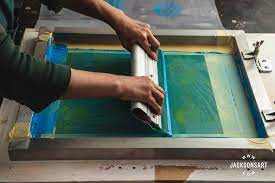
Screen printing is a widely used and versatile technique. It involves creating a stencil (or screen) for each color in the design and then applying ink through the screens onto the t-shirt. Screen printing provides vibrant, long-lasting prints and works well for larger quantities. It is ideal for bold, solid-colored designs and offers excellent color opacity. However, it may not be suitable for intricate designs with fine details.
Direct-to-Garment (DTG) Printing:
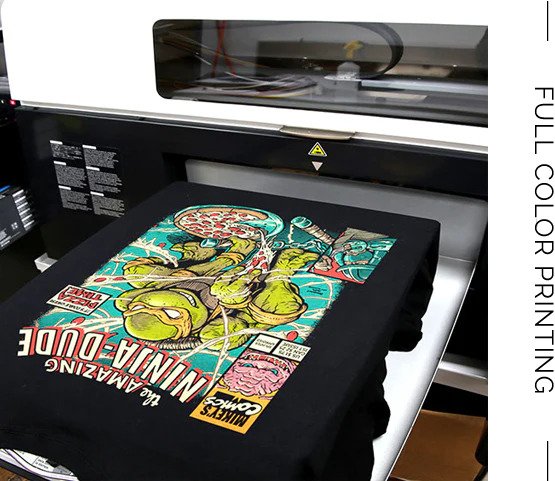
DTG printing is a relatively newer technique that uses specialized inkjet printers to print designs directly onto the fabric of the t-shirt. It allows for highly detailed and complex designs, including gradients and photographs. DTG printing offers unlimited color options and is especially suitable for small batch or single-item printing. However, it may be less cost-effective for large quantities and may not adhere well to certain fabric types.
Heat Transfer Vinyl (HTV):
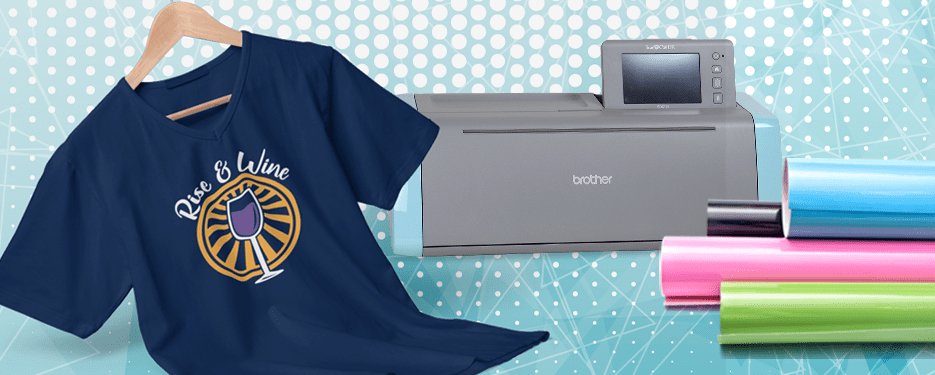
HTV involves cutting designs out of colored vinyl sheets and then applying them to the t-shirt using heat and pressure. It is commonly used for creating text, numbers, or simple graphic designs. HTV provides a durable and vibrant result, especially on dark-colored garments. However, it may not be ideal for intricate or multi-colored designs, and the vinyl can feel slightly thicker on the fabric.
Dye Sublimation:
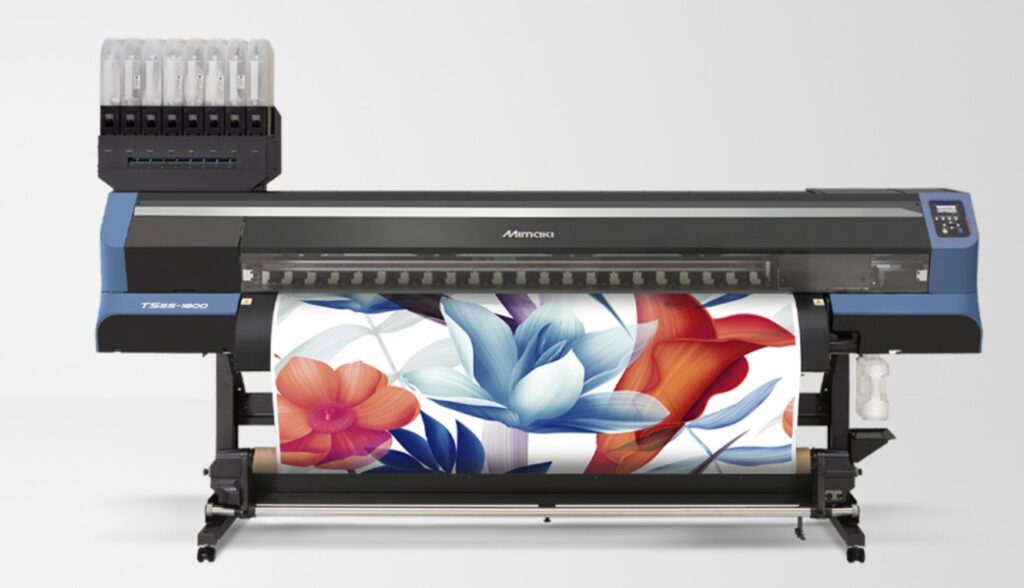
Dye sublimation printing involves transferring designs onto t-shirts using heat to convert dye into a gas, which bonds with the fabric’s fibers. This technique allows for full-color, high-resolution prints that are soft to the touch. Dye sublimation works best on light-colored polyester fabrics, as the dye is absorbed into the fabric rather than sitting on top. It is ideal for all-over prints or designs that require precise color matching. However, it is not suitable for cotton or dark-colored garments.
Vinyl Cutting:
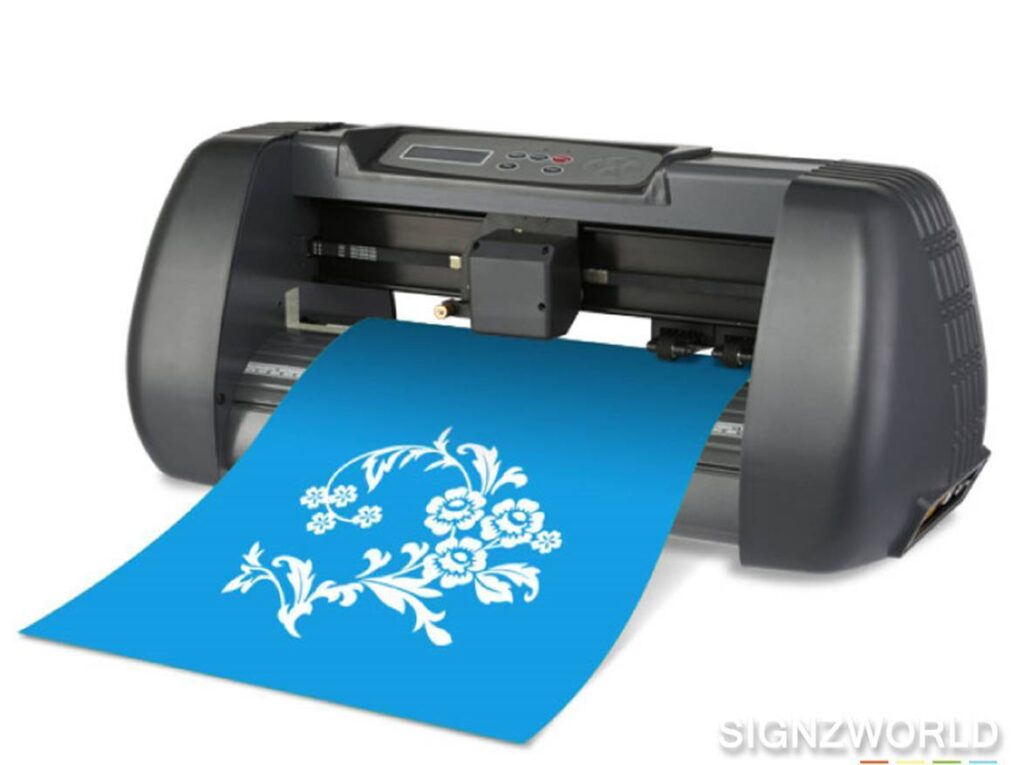
Vinyl cutting involves cutting designs out of colored vinyl sheets and then heat pressing them onto the t-shirt. It is commonly used for creating lettering, logos, and simple graphics. Vinyl cutting offers a wide range of color options and provides a durable and long-lasting result. It is particularly popular for personalization and customization. However, like HTV, it may not be suitable for complex or multi-colored designs.
Consider the complexity of your designs, the quantity of t-shirts you plan to produce, the fabric type, and your budget when selecting a printing technique. Each technique has its own set of requirements and limitations, so choose the one that best aligns with your design vision and business goals.
How many tshirts should I start my business with?
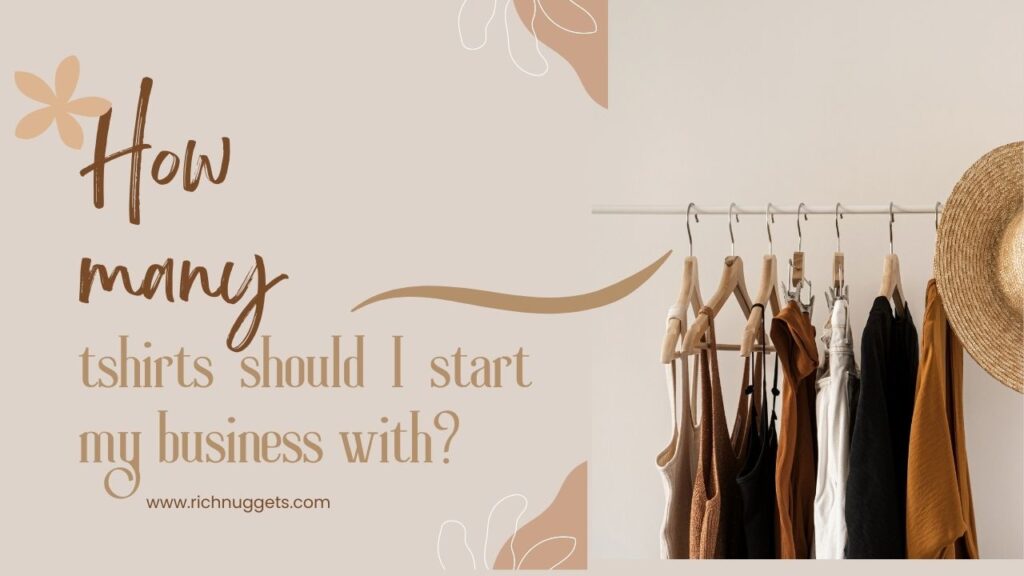
Starting with around 192 tees in total (24 tees per design with sizes 6S, 6M, 6L, and 6XL) is one approach that allows for a decent variety across your entire line.
Another suggestion is to order at least 36 T-shirts for each design. This quantity provides enough inventory to observe which sizes and designs sell best while still ensuring that you don’t run out of a particular size immediately.
Large size tends to be the most sellable t-shirt, accounting for about 30% of shirt sales. Medium size follows closely at approximately 28%, and extra-large comes next at around 20%. This information can guide your decision-making process when determining the size distribution.
It is generally recommended to include a good amount of medium, large, and extra-large sizes since these tend to be the most popular among t-shirt lovers. However, it’s also wise to have a range of sizes available to cater to various customer preferences.
Considering these factors, it is advisable to start your business with a selection of designs that totals around 192 tees or to begin with at least 36 t-shirts for each design, focusing on the medium, large, and extra-large sizes while still including other sizes in your inventory. This way, you can gauge demand and adjust your future orders based on the popularity of different sizes and designs within your target market.
KEY RESOURCES:
- How to Start a Dropshipping Business in 6 Steps”
- Print on Demand Business in Nigeria: The Ways to Profitability
- How to Start a Business with No Money
- How to Start a Business Online in 11 Easy Steps
Last thought on Tshirt business
Embarking on a t-shirt business in Nigeria can bring forth excitement and fulfillment. By following the steps provided in this guide, you can establish a strong basis for prosperity.
Nevertheless, it’s worth noting that starting a t-shirt business without money though challenging but not impossible. With determination, creativity, and resourcefulness, you can discover methods to bootstrap your business and foster its gradual growth.
Therefore, don’t let financial limitations hold you back. Embrace the possibilities, explore alternative routes, and let your creativity shine.
Discover more from StartBizEasy
Subscribe to get the latest posts to your email.





